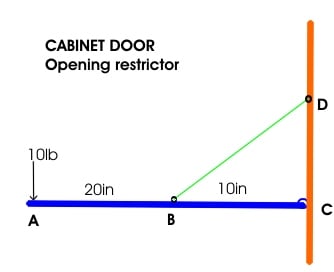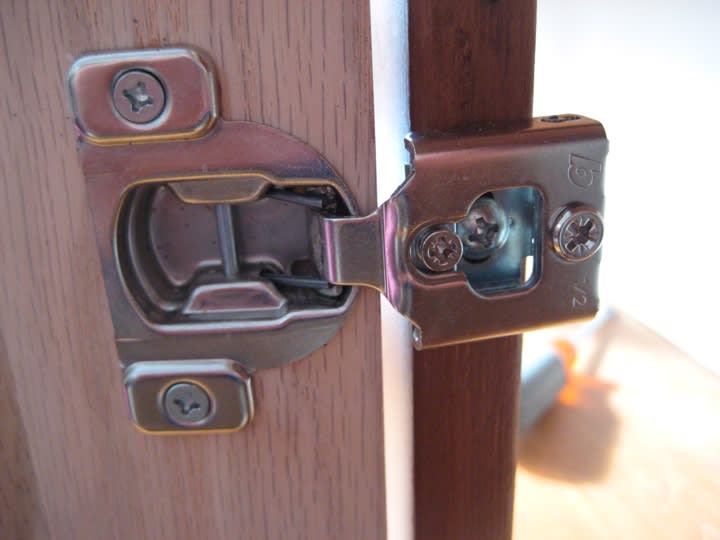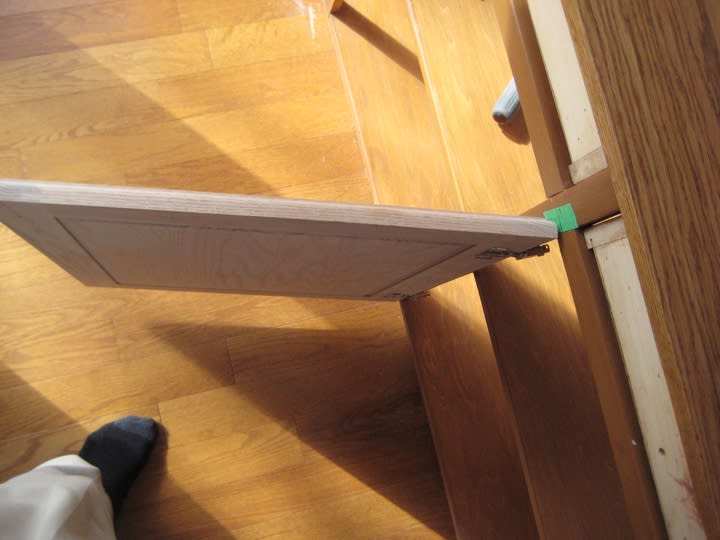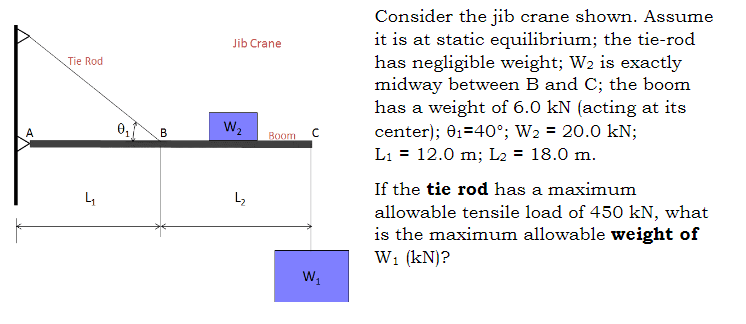MBGraham
Chemical
- Mar 9, 2021
- 42
We have new cabinet doors. They are quite wide and somewhat vulnerable. I am thinking about adding a brace to limit the opening to 90deg (hinges go to 105deg.
It's been a long time since I did any structural engineering! What I would like to see, is a load diagram for situation shown in drawing below. And in particular the loading on the main hinge aat C.
- 10lb load denoted is the pushing force on the outer edge of the door
- Blue Line is the door
- Orange line is the cabinet frame
- Green line is wire restraint
- B,C&D are hinged points. The main door hinges are at C
Thanks

It's been a long time since I did any structural engineering! What I would like to see, is a load diagram for situation shown in drawing below. And in particular the loading on the main hinge aat C.
- 10lb load denoted is the pushing force on the outer edge of the door
- Blue Line is the door
- Orange line is the cabinet frame
- Green line is wire restraint
- B,C&D are hinged points. The main door hinges are at C
Thanks





